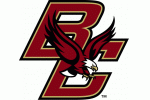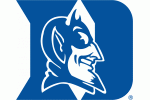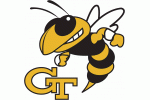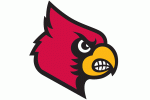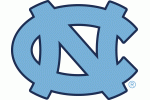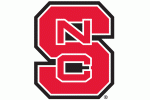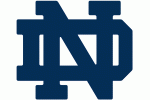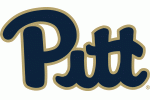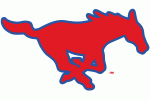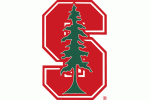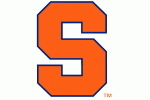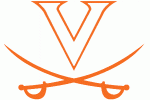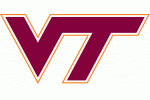Let’s look at some of the data related to the freshman center’s departure.

When Tony Bradley declared that he would be remaining in the NBA Draft and foregoing his remaining college eligibility, most Tar Heel fans had a similar reaction, and it went something along the lines of, “Why? He could’ve come back, been a star for a year, and played himself into the lottery instead of entering a draft where he’s a fringe first round player!” And yes, that includes us writers at Tar Heel Blog.
We’ve already talked about whether or not it’s fair to critique the decision given that the draft hasn’t happened yet, and also that there must be personal factors that we have no access to, but there seems to be a general consensus that were we in Tony Bradley’s ear, we’d be telling him that coming back to UNC would undoubtedly be a better move than staying in the draft. He would have been the star of a thin frontcourt, playing for one of the best coaches in college basketball (and one who has a reputation for working magic with big men), and had the opportunity to improve his body. He could have entered the 2018 Draft a better, more nationally recognized, and readier prospect.
At least, that’s what conventional wisdom says. And in sports, conventional (coaching) wisdom is often wrong. A few examples from my favorite sports, just to back myself up here:
- Mathematicians have known for decades that in football, especially the NFL, if you score a touchdown when you’re down 14 late-ish in the game, you should go for two (Click here for an explanation). Coaches almost unilaterally refuse to do this, because their logic says that an extra point kick is safer than a two-point attempt, and two of the former are twice as safe as two of the latter.
- It took basketball coaches years to start fouling before the shot on their opponents’ last position when they were up three, even though it has clearly been the logical thing to do since the inception of the three-point line.
- Similarly, basketball coaches have been very slow to take to going two-for-one at the end of halves and quarters, preferring one high-percentage shot to one low-percentage shot and a high-percentage shot.
- And that’s not even mentioning how long it took for coaches to realize that three-pointers are not bad shots.
- This one’s relevant: Across all sports, teams often draft for “upside” and “high ceiling,” because convention is to believe in your coaching staff to get players to reach that ceiling. This results in players like Wade Baldwin IV, an athletic, long, guard with defensive potential and shooting ability but an incomplete profile, getting drafted in the top 20 and Malcolm Brogdon, a complete player with less room to grow, falling to the second round. Being good, but maxed out before the pros, is seen as a negative, but the truth is that it’s really hard to get better at something once you’re already really good, and taking somebody who’s already really good is not a bad thing.
So when deriding Bradley’s decision, let’s be careful of citing what’s been established, because there is certainly precedent for that being wrong. Now, let’s look at some data:
/cdn.vox-cdn.com/uploads/chorus_asset/file/8588637/Bradley_Devils_Advocate3.PNG)
In bold are post prospects, the most comparable to Bradley.
In summary: I went hunting, and found the eighteen 5-star recruits since 2012 who were mocked in the first round by DraftExpress (DX) but decided to return to school, and then tracked each of their subsequent careers, draft stocks, and, if applicable, their actual draft positions.
As you can probably see, that’s a lot of red. Ten out of the 18 charted players had their stock decrease precipitously, nine of them falling out of the first round entirely and the other, Thomas Bryant, going from top-10 prospect as a freshman to projected out of the lottery as a sophomore. The four prospects highlighted in yellow saw or have seen no significant change in their draft stock due to staying in school, the two in white have at least one more year to change minds (but given their existing trends, it should be said that they look to be headed in the red direction), and only the two in green were able to improve their draft stock significantly by staying in school. Neither, incidentally, was a post player. I don’t think this is coincidental, but more on this later.
Let’s address the elephant in the room: according to my own criteria, Tony Bradley seemingly does not have first-round draft stock. The most recent DraftExpress mock, as of May 25th, has Bradley going 41st in the 2017, which is early-mid second round. However, they had him going 18th in their 2018 Mock Draft published on April 18th, 2017 (This is both a function of the historic strength of this year’s class (on paper) and DraftExpress buying into the hope of improvement).
Several of the draft stocks listed in the chart above are similar to this case; DX was predicting where players would go a year in the future. I don’t think this changes the point much, because once that year came, most didn’t meet expectations regardless. Bradley would thus fit right in with this group, and I think it’s a valid comparison to make.
So it seems from the data that if a player is getting first-round talk, even if it’s not for the immediate year, it might be a better idea to go for it. Most of these players regressed in college and played their way out of the NBA. Declaring early would likely have meant a much better chance at playing in the league; even if they didn’t get a guaranteed contract off the bat, they’d have their foot in the door and the tantalizing promise of youth that NBA coaches just seem to love (is this another example of coaching wisdom gone awry? Perhaps). Just looking at the data, I think it can be argued that Bradley may have had legitimate fears about the same happening to him.
So why does this happen? It might be as simple as I said before: It’s really, really, hard to improve at something you’re already very good at, like Tony Bradley is at basketball. We know he’s not perfect, and most of us could probably say pretty easily where his game could improve, but it’s a big leap from “could” to “would” or “will.” It’s a leap that I wouldn’t entirely blame Bradley for being scared to make in college, with relatively little financial and emotional reward compared to the risk.
There are other factors at play, too, of course. There’s the endless cycle of recruiting, particularly at a school like Kentucky (where 1/3 of the displayed data) comes from, where 5-stars replace 5-stars pretty much every year. There’s the aspect of coaching and the relationship between player and coach, some players’ interest in maximizing their skill versus their coaches’ interest in the team winning (and more importantly, some players’ impression that these are mutually exclusive), et cetera.
Like I mentioned before, neither of the green-highlighted players (Marcus Smart and Justin Jackson) are post players. We’ve obviously chronicled Jackson’s career at UNC; his visit to the NBA Combine, the feedback he received, and his determination to act on it are at this point pretty much Carolina legend. Importantly, one of the biggest things for Jackson was improving his three-point shot, something a wing player has to be able to do in the NBA. Smart similarly had an inefficient jump shot after his freshman year, though he did not have quite the improvement that Jackson did. Both players had an established point of focus that was necessary to succeed at the next level and worked on it to improve their draft stock.
The thing about post players projected to go in the first round is that they’re already extremely skilled. Unlike the wing players, their role is more limited, and therefore they have less room to do things poorly. This makes improvement much harder for them than for wing players. The two post players who remained first-round prospects in the data set, Bobby Portis and Ivan Rabb, also added a three-point shot to their arsenal in their second years. It is of note that Bradley has expressed interest in being a three-point shooter in the NBA, and may have felt that his role as lead center in UNC’s offense would not allow him to expand his portfolio, as it were, the way the other two players did. Without that ability, the data here paints a pretty convincing picture that he would slide if he stayed another year.
A few caveats about the data:
- The sample size is fairly small. If there’s interest, I can go back to the beginning of the OAD era and see if anything changes, though I suspect it will not.
- DraftExpress obviously isn’t a perfect source because it’s not run by NBA teams. That said, they do have a good reputation and very good historical accuracy.
- Several players on this list have not been drafted yet. Therefore, some may argue that the mock draft data regarding them is invalid. Due to DX’s aforementioned historical accuracy, I think using their mock draft positions is a valid method of inquiry.
- As mentioned, many of the mock draft positions listed are for future drafts, not the one that the prospect would be entering after that year. This point has already been addressed. The prospects’ draft stock for the draft immediately after their freshman year was often not available through DX’s Mock History tool.
- Some, especially fans of some of the teams indicted, will also quibble about using star ratings, which we’ve all seen be misleading or inaccurate. But it’s been shown again and again that when we look at recruiting as a whole and not as something defined by its outliers, star ratings are extremely predictive of future success.
In conclusion, you may want to think twice before immediately labeling Tony Bradley’s decision to go pro as stupid, selfish, or nearsighted. History just might be on his side on this one.


